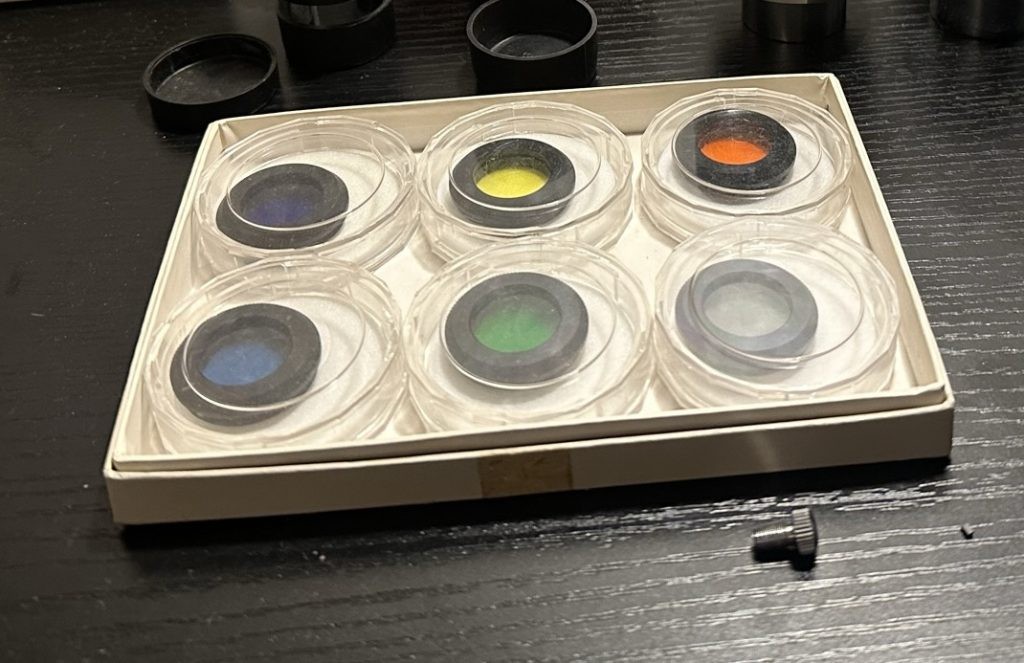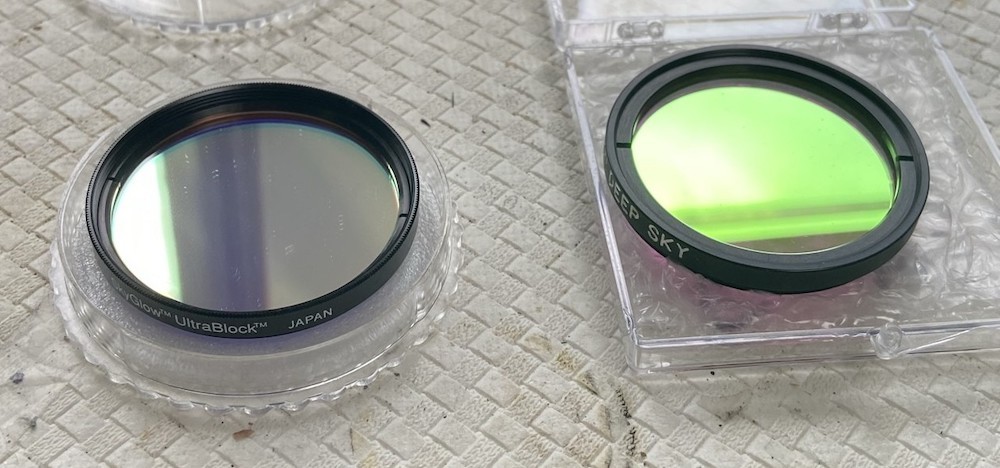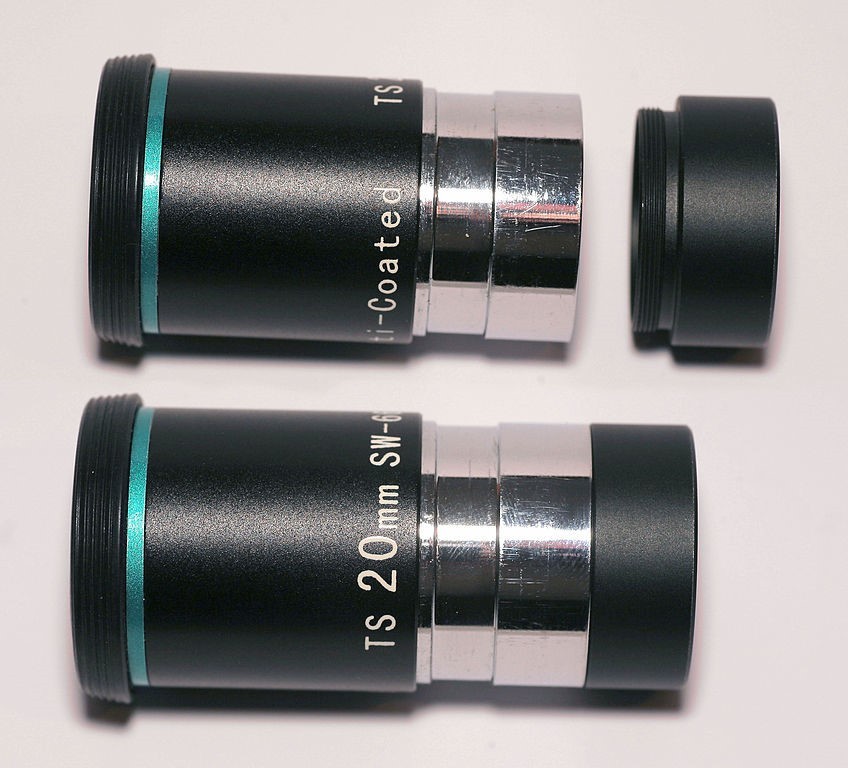It hurts me that a lot of telescopes, even fairly acceptable ones, heavily lean into the inclusion of accessories or features that are a bit pointless or are offered in “kits” or “bundles.” They attempt to convince us that we are making a wise choice since the extra included accessories would cost so much to buy separately.
With the exception of the packaged options offered by our trusted associate vendor, High Point Scientific, most of the simple eyepiece/filter “kits” or “packages” are bad deals, if not outright scams.
Most of the time, by buying one of these kits, we are saddled with a set of low-quality or pointless items:
- The shorter focal length Plossl eyepieces that come with most of these kits tend to be next to useless.
- The Barlow lens (if any is included) is often either of very low quality or makes some of the provided eyepieces’ focal lengths redundant.
- Even the “kits” of higher-quality wide-angle eyepieces are usually not worth buying. Many eyepieces even differ in quality between focal lengths across a lineup and we again may be buying gear that’s redundant or simply not a good deal.
- The filters included with such kits are often unnecessary.
- The aluminum or plastic cases most eyepiece kits come in are nothing special and we’re better off with a third-party padded hard case like a Pelican or Seahorse.
The Often-Included Useless Moon Filter
A common phenomenon with beginner telescopes or accessory packages is that cheap colored or tinted filters are often included with the claim that we can use them to dim the Moon.
- For one, the Moon is not going to harm our eyes if we look at it unfiltered, even when it’s full and with a very big telescope.
- Two, all of these filters just muck up the view as they tend to be optically poor (or just made of plastic).
Color Eyepiece Filters
Good color filters are a niche piece of equipment for even the most dedicated planetary observers. I don’t bother with any filters for planetary work besides the Baader Neodymium (a very niche item that also costs more than some beginner telescopes).

Completely Ineffective Light Pollution Filters
Less commonly peddled directly alongside telescopes are cheap light pollution “filters.”
Light pollution cannot be “filtered out”. We cannot cancel out city light with a filter without also blocking the light from the star, galaxies, or nebula we’re looking at. But manufacturers will try to convince us of this anyway.
Back in the old days, sodium- or mercury-vapor streetlights were commonly used for municipal lighting alongside incandescent or halogen lights for businesses. These orange- or yellow-ish lights only emit around certain wavelengths of the visible spectrum (centered on these colors). It used to be possible to use a filter to merely cut out these wavelengths and drastically minimize the effects of light pollution on all types of objects in the night sky with minimal downsides.
The trouble is that in most of the developed world, LED lighting has now taken over most outdoor light fixtures and most LEDs emit light across the entire visible spectrum. So, we cannot “filter out” city lights from our view.
Nebula Filters: The Sole Recommended Filter For Visual
The only kind of filter I actually use on deep-sky objects for visual observation is a nebula or “emission line” filter. This only works for viewing nebulae, with the exception of reflection nebulae and dark nebulae that don’t give off any light of their own.

These filters work solely because nebulae happen to emit light at specific wavelengths, just like our street lights used to. So with a filter that does the opposite of those old broadbands (only passing an extremely narrow set of wavelengths), it’s possible to isolate the light from a nebula and get a clearer image with a darker background.
A UHC (ultra high contrast) filter is specifically the main type of nebula filter I would recommend. Oxygen-III and hydrogen-beta filters can be useful too, but they are generally costly and only employed with larger telescopes. I’ve gone over some of my favorite picks for nebulae filters in a dedicated article.
Be careful when shopping for these types of filters; many “UHC” filters are actually just broadband filters that will do next to nothing to improve our views. “Broadband” filters that are less sensitive to certain wavelengths and colors of light can help for astrophotography purposes, but they are useless for visual observation.
A good UHC filter significantly improves the contrast between a nebula and the background sky, regardless of our sky conditions, as most nebulae only emit light at very specific wavelengths. This is because most nebulae are basically cosmic neon signs that are glowing from ionized gases. Even under a dark sky, a nebula filter is worth having, as it makes certain details easier to see by dimming the background sky and stars.
Even a good nebula or “light pollution” filter will not improve our views of stars, faint Solar System targets like Pluto and asteroids, or galaxies. It merely dims these objects, often making them invisible altogether if the filter is not of the broadband type. A broadband filter also dims stars and galaxies, but more often than not, the effect is too subtle to notice and we’ll just get the impression that the filter is doing nothing at all.
Barlow Lens: A Hit or Miss Accessory

Besides the silly aftermarket “eyepiece kits,” a lot of telescopes—particularly bad ones—include a Barlow lens of some sort to double or triple the magnification.
In the best case, I found these included Barlows to be okay, but most are plastic in construction and many have plastic optics too. They are unlikely to produce a usable image. Even if they were not plastic, the magnification they yield may be too high.
For example, the Celestron PowerSeeker 127EQ that I’ve tested has a 4mm Ramsden eyepiece that yields 250x magnification, which is already the limit for a good 127mm telescope and a good eyepiece (of which neither is even close to being). So of what use is 750x magnification, especially with an all-plastic Barlow that is included with the scope?
Even some fairly commendable telescopes can include a low-quality Barlow and in many cases, it is either no good or produces too much magnification to be useful.
